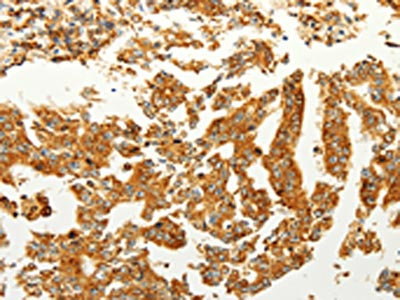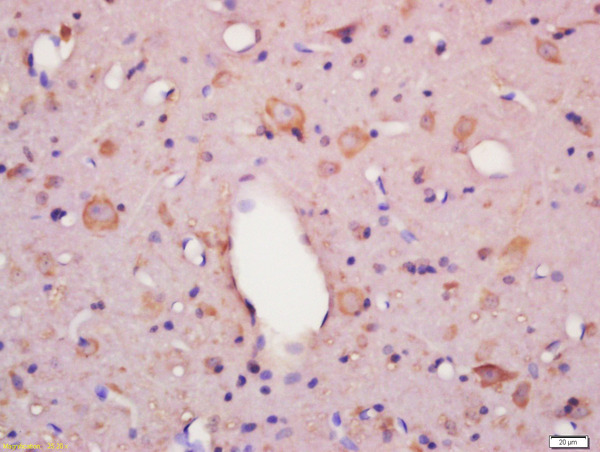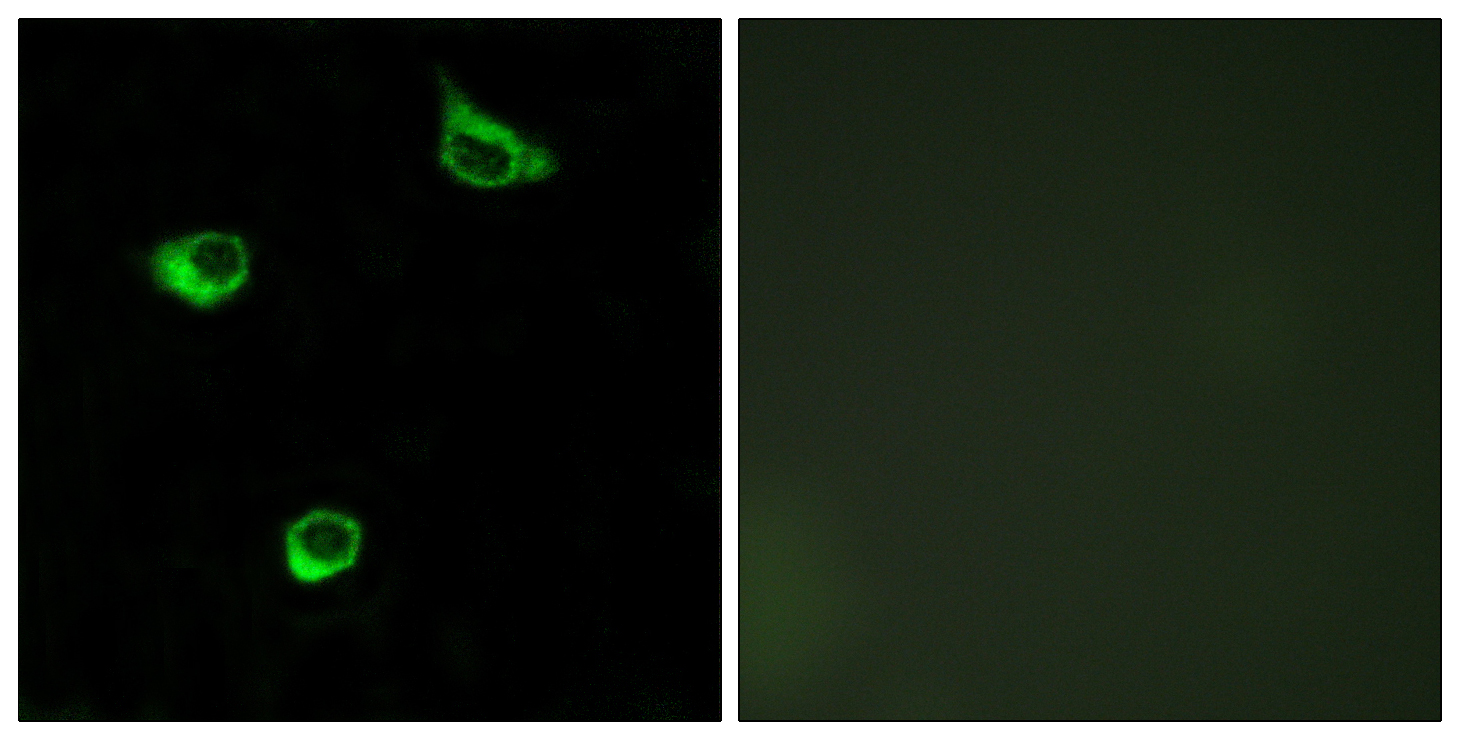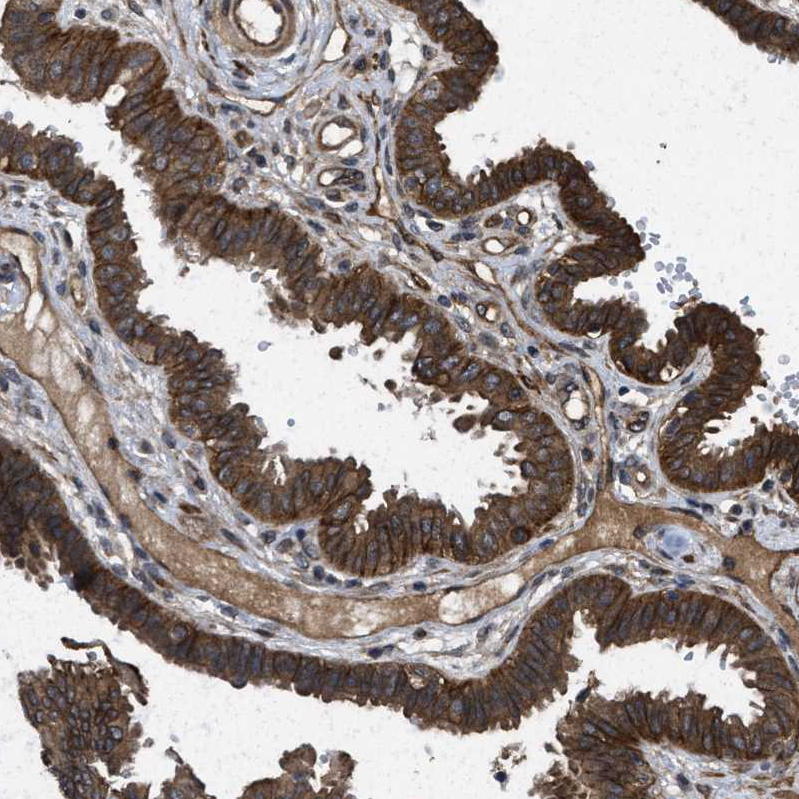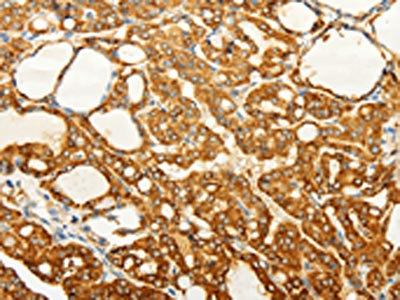
The image on the left is immunohistochemistry of paraffin-embedded Human thyroid cancer tissue using CSB-PA032335(FZD6 Antibody) at dilution 1/60, on the right is treated with synthetic peptide. (Original magnification: x200)
FZD6 Antibody
CSB-PA032335
ApplicationsELISA, ImmunoHistoChemistry
Product group Antibodies
ReactivityHuman, Mouse
TargetFZD6
Overview
- SupplierCusabio
- Product NameFZD6 Antibody
- Delivery Days Customer20
- ApplicationsELISA, ImmunoHistoChemistry
- CertificationResearch Use Only
- ClonalityPolyclonal
- ConjugateUnconjugated
- Gene ID8323
- Target nameFZD6
- Target descriptionfrizzled class receptor 6
- Target synonymsFZ-6, FZ6, HFZ6, NDNC1, NDNC10, frizzled-6, frizzled 6, seven transmembrane spanning receptor, frizzled family receptor 6, frizzled homolog 6, seven transmembrane helix receptor
- HostRabbit
- IsotypeIgG
- Protein IDO60353
- Protein NameFrizzled-6
- Scientific DescriptionThis gene represents a member of the frizzled gene family, which encode 7-transmembrane domain proteins that are receptors for Wnt signaling proteins. The protein encoded by this family member contains a signal peptide, a cysteine-rich domain in the N-terminal extracellular region, and seven transmembrane domains, but unlike other family members, this protein does not contain a C-terminal PDZ domain-binding motif. This protein functions as a negative regulator of the canonical Wnt/beta-catenin signaling cascade, thereby inhibiting the processes that trigger oncogenic transformation, cell proliferation, and inhibition of apoptosis. Alternative splicing results in multiple transcript variants, some of which do not encode a protein with a predicted signal peptide.
- ReactivityHuman, Mouse
- Storage Instruction-20°C or -80°C
- UNSPSC41116161

